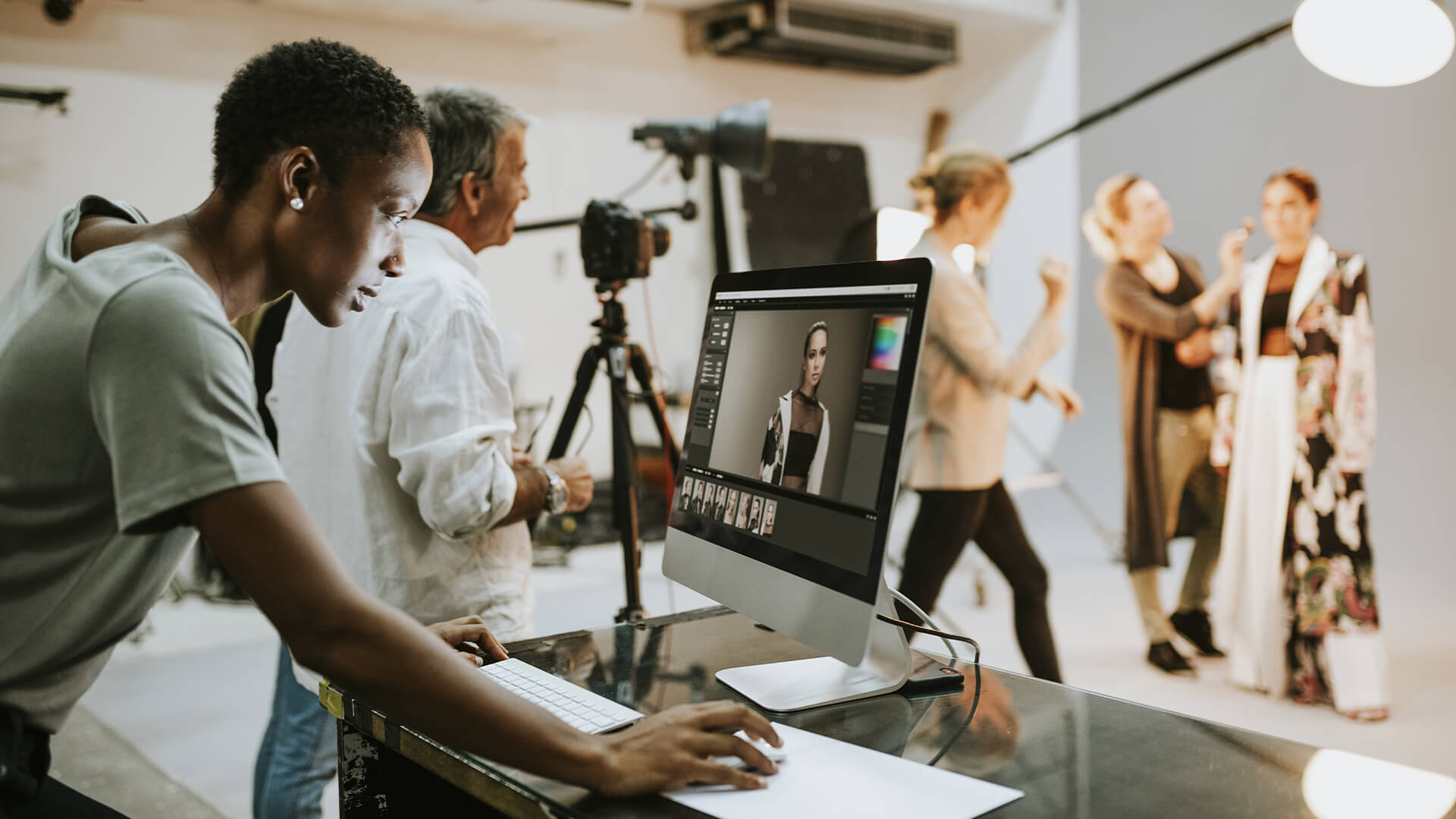From Entertainment to Enterprise: A New Era of Celebrity Creative Directors
The recent appointment of Love Island’s Molly Mae Hague as Creative Director of Pretty Little Thing has proven to be a disruptive topic within the social sphere, leading to conflicting opinions on whether or not celebrities are equipped to lead the creative practices of brands.
Printing experts Solopress have analysed the new emerging trend of celebrity Creative Directors, delving into the potential benefits and drawbacks of offering senior titles to those already accustomed to the spotlight over professionals who are not.
The World of Celebrity Creative Directors
With household names Jennifer Aniston and Drew Barrymore representing the corporate image of Vital Proteins and Garnier respectively and Emily Ratajkowski named Creative Director of face mask brand Loops in October 2020, there’s an evident rise in demand for celebrities to occupy these sought-after roles.
Supermodel and influencer Kendall Jenner also became the most recent addition to the Celebrity Creative Director roster, joining fashion brand FWRD as Creative Director.
However, it isn’t famous females alone that have made a name for themselves with varying levels of success in the business world, with rapper Big Sean appointed as Creative Director of the Detroit Pistons in 2020, will.i.am being previously appointed as Creative Director for tech giants Intel, and fashion titan Marc Jacobs being appointed as CD of Diet Coke in 2013.
This obvious demand for celebrities in senior corporate roles has left many consumers, followers and industry professionals questioning whether or not these appointments are strategic business decisions or mere PR stunts to drive brand awareness.
Are Celebrities Qualified to Become a Creative Director?
Between four and seven years of experience working in the advertising, marketing or design sectors is required for non-celebrity candidates to reach executive level and become Creative Directors, according to Campaign.
Skillshare also notes that degree-level education is required in either art, marketing, graphic design, photography or fashion, in addition to practical experience in the chosen industry, naturally climbing the career ladder from a junior position.
The job specifications and qualifications required for prospective non-celebrity Creative Directors already put these candidates at a significant disadvantage compared to celebrities and influencers, who are given leniency with their credentials due to their status, followership or wider industry experience.
What Duties are Involved in the Role of the Celebrity Creative Director?
Creative Directors are tasked with defining the creative vision of a brand, ensuring a cohesive look and feel, establishing budgets and leading the creative team; governing the direction of advertising campaigns and marketing communications.
When it comes to the expectations of celebrity Creative Directors, the rules are slightly more nuanced. Jennifer Aniston’s relationship with Vital Proteins includes being responsible for product innovations and brand strategy in addition to leading a new social campaign for the brand which incorporates her personal wellness rituals.
On the other hand, Kendall Jenner’s Creative Director duties include taking charge of the look and feel of the FWRD site, the curation of brands sold on-site, monthly trend and style edits as well as marketing ideas, brand partnerships and brand activations.
Pretty Little Thing said Molly Mae Hague will be working closely with the brand’s creative team throughout 2021 and 2022, directing upcoming advertising campaigns and signing new faces for the brand.
What Can Celebrity Creative Directors Offer Brands?
With their immense followership, strong connection to their audiences and involvement in the promotion of various brands throughout their career, celebrities bring with them the promise of mass exposure, improved customer confidence and increased sales. Leveraging the 6.1 million Instagram followers of Molly Mae Hague or the 191 million followers of Kendall Jenner will naturally enhance the exposure of a brand, which in turn builds momentum from a sales perspective.
This undisputable effect and sales uplift is evidenced in Dwayne “The Rock” Johnson’s signature sneaker for Under Armour named Project Rock One which sold out just 30 minutes after launching. When Pizza brand Papa John’s partnered with Shaquille O’Neal and the star created his own signature pizza, over 3 million units were sold within a 2-month period leading to O’Neil eventually becoming a board member of the brand.
Creative Director of 20ten Sam Richardson stated that one of the key responsibilities of a CD is to promote a brand in the most effective way possible and hiring celebrities is a strategic way to achieve this.
Whilst some brands will naturally gravitate toward hiring idolised celebrities to share their audiences, others are drawn to their years of experience in certain fields. In response to the appointment of Kendall Jenner as CD of FWRD, Revolve Group shared that due to her years of operating within the fashion industry, Kendall is an expert in the field and therefore couldn’t be a better fit for the position. Similarly, Umar Kamani, CEO of Pretty Little Thing commended Molly Mae Hague for playing such a strong role in the Pretty Little Thing journey and for her investment in the brand, implying that the 22-year-old was selected for her experience, previous input and capabilities in the industry.
Despite the varying motivations for placing celebrities in these demanding roles, are celebrity Creative Directors really up to the task?
Celebrity Endorsements Gone Wrong
From David Beckham representing Brylcream and soon after shaving his head, to Helena Bonham Carter revealing “I don’t know why they chose me, I don’t wear much makeup” in response to her becoming the face of Yardley Cosmetics, there have been a number of jarring examples of celebrity appointments taking a turn for the worse.
The event of Lady Gaga being elected as Creative Director of Polaroid in 2010 to develop a wireless mobile printer and glasses that could take pictures that never materialised also suggests that the partnership was forged in pursuit of acquiring the artist’s following as opposed to introducing something new and innovative to the market.
These instances emphasise the real risk attached to celebrity appointments without the attachment of relevant qualifications and commercial awareness. One of the most notable examples being when Jessica Alba was hired as Microsoft’s Creative Director to promote the new Windows phone in 2021, the actress was caught tweeting a picture from an Apple iPhone, a directly competing product.
The Average Salary of a Creative Director
As you may expect, becoming a Creative Director in the celebrity world usually involves a highly lucrative proposition. Molly Mae Hague is rumoured to have been awarded a seven-figure deal as a result of her new position whilst for the non-celebrity Creative Director, the average salary sits at £78,654 per year for Creative Directors in the United Kingdom.
Unsurprisingly, this significant pay gap and arguable skills gap between celebrity and non-celebrity corporate brand leaders has sparked a great deal of debate on social media.
One Twitter user commented “Nowadays the connections you have and amount of followers are more valuable than education or experience even” in response to a tweet on the subject of Molly Mae’s appointment, with many others eluding to the fact that those with relevant qualifications would be more deserving of the role. Others took to the social platform congratulating the former Love Island star for her hard work, hailing the 22-year-old as an inspiration, revealing a significant divide in opinion in relation to celebrity “hustle culture”.
The Future of Celebrity Creative Directors
Time will tell if this emerging business model of bringing celebrities to the forefront of major brands will become more about finding new ways to resonate with audiences and develop brands and less about reaping the benefits of a celebrity’s huge social presence.
It will be interesting to see if a candidate’s social presence is going to be considered a significant commodity or pre-qualifier in the hiring process as we look to the future of Creative Directors and whether or not measures will be taken to provide fully qualified, non-celebrity Creative Directors with the same benefits and commendation as their celebrity counterparts.

Stay updated with our latest publications.
Discover Issues
See how we can help you grow in the online space!
Advertise With Us
We can help promote your business.
Find Out More




